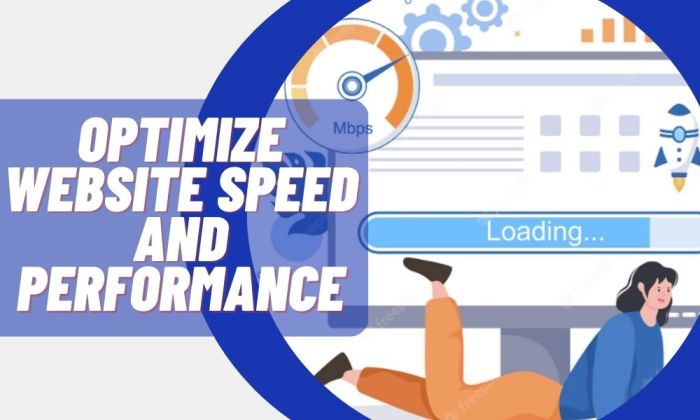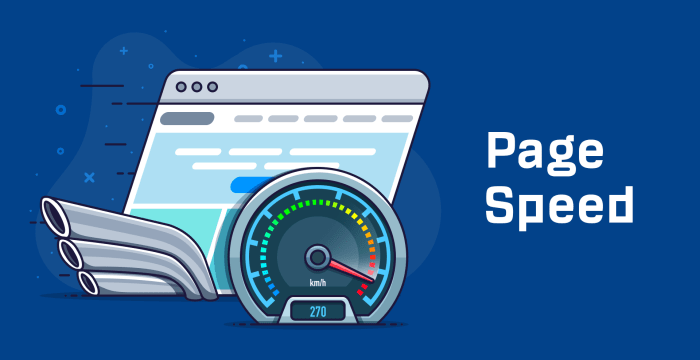Kicking off with Optimizing Website Speed, this topic dives into the importance of website speed optimization, the factors affecting it, strategies for improvement, and tools/resources to help you ace your online game.
Importance of Website Speed Optimization

In today’s fast-paced digital world, optimizing website speed is crucial for online businesses to stay competitive and retain users. Slow loading times can have a significant impact on user experience, leading to higher bounce rates and decreased conversions.
Impact on User Experience
- Users expect websites to load quickly, and a delay of just a few seconds can lead to frustration and abandonment.
- Slow loading times can result in poor user engagement, as visitors are less likely to explore a site with sluggish performance.
- Studies have shown that 40% of users will leave a website if it takes more than 3 seconds to load.
Effect on Conversions
- Faster websites tend to have higher conversion rates, as users are more likely to make a purchase or complete a desired action when the site is responsive.
- A 1-second delay in page load time can result in a 7% reduction in conversions, highlighting the importance of speed optimization for maximizing revenue.
Impact on Rankings
- Website speed is a crucial factor in determining search engine rankings, with Google considering it as a key metric for user experience.
- Faster websites are more likely to rank higher in search results, leading to increased visibility and organic traffic.
- Research has shown that pages with faster load times tend to have lower bounce rates and higher average session durations, signaling to search engines that the content is valuable to users.
Factors Affecting Website Speed: Optimizing Website Speed

When it comes to website speed, several factors play a crucial role in determining how fast or slow a site loads for users. These factors can range from the type of content on the site to the server’s performance in delivering that content efficiently.
Impact of Images and Multimedia Content
Images and multimedia content are often the main culprits when it comes to slowing down website loading times. Large image files, videos, and other multimedia elements can significantly increase the time it takes for a page to load. To optimize website speed, it is essential to properly compress and resize images, use lazy loading techniques, and consider the format of multimedia files to ensure they are not unnecessarily large.
Server Response Time
Server response time refers to the amount of time it takes for a web server to respond to a request from a user’s browser. A slow server response time can have a direct impact on the overall performance of a website, leading to longer loading times and potentially frustrating user experiences. Factors that can influence server response time include server load, hosting provider, and the complexity of the website’s code. It is crucial to optimize server configurations, utilize content delivery networks (CDNs), and implement caching mechanisms to improve server response times and enhance website speed.
Strategies for Improving Website Speed
When it comes to optimizing website speed, there are several strategies that can make a significant impact on the loading times of your site.
Optimizing Images
One key technique for improving website speed is optimizing images without compromising quality. This can be achieved by resizing images to the correct dimensions needed for display on your website, reducing the file size by compressing images without losing visual fidelity, and choosing the right file format (such as JPEG or PNG) based on the type of image.
Minifying CSS, JavaScript, and HTML Files
Minifying CSS, JavaScript, and HTML files involves removing unnecessary characters, comments, and formatting from the code to reduce file sizes. This process helps to streamline the loading of these files by browsers, leading to faster page load times. Tools like CSSNano, UglifyJS, and HTMLMinifier can be used to automate this minification process.
Browser Caching
Browser caching is another important strategy for improving website speed. By enabling browser caching, you can store static resources like images, CSS, and JavaScript files locally on a visitor’s device. This allows the browser to load these resources more quickly upon subsequent visits to your site, reducing the need to re-download them each time.
Tools and Resources for Website Speed Optimization
In order to optimize website speed effectively, it is important to utilize various tools and resources that can help in analyzing and improving performance. These tools can provide valuable insights and suggestions for enhancements.
Popular Tools for Testing Website Speed and Performance
- Google PageSpeed Insights: This tool analyzes the content of a web page and provides suggestions to make that page faster.
- GTmetrix: GTmetrix provides a detailed analysis of your website’s performance, along with actionable recommendations.
- Pingdom Tools: Pingdom Tools offers a website speed test that helps identify what about a web page is fast, slow, too big, etc.
Role of Content Delivery Networks (CDNs) in Improving Load Times, Optimizing Website Speed
Using a Content Delivery Network (CDN) can significantly improve website speed by distributing content across multiple servers geographically closer to the user. This reduces latency and ensures faster load times for visitors accessing the website from different locations.
How Tools Like Google PageSpeed Insights Can Help Identify Areas for Improvement
Google PageSpeed Insights evaluates the performance of a web page on both mobile and desktop devices and provides suggestions for improvement. By following the recommendations provided by tools like PageSpeed Insights, website owners can address specific areas that are affecting speed and make necessary optimizations to enhance overall performance.